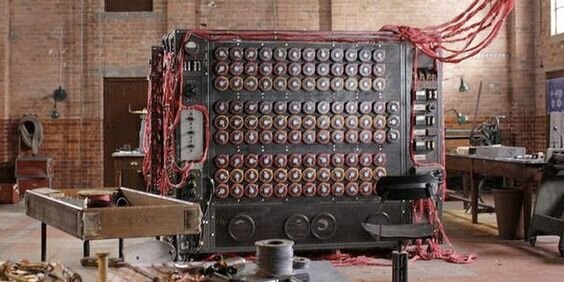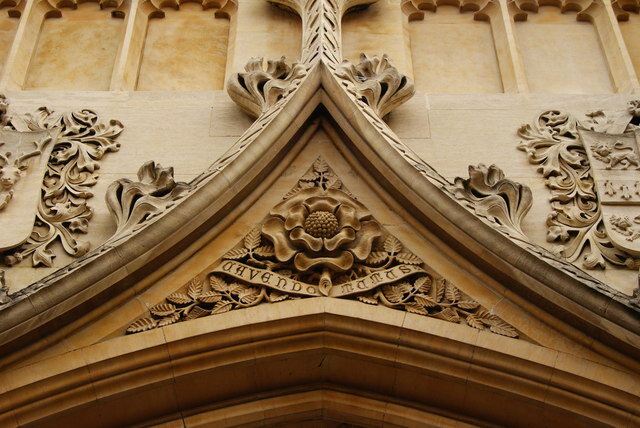Cambridge Inventions : Old & New
For many centuries now Cambridge has been at the forefront of discoveries and inventions in many fields. From footlights that gave us cherished gems like Stephen Fry and Emma Thompson to computers as we know them today, revolutionary discoveries in medical science to the most poetic truth about us living beings! It’s hard to imagine today what our world would have been like without them! But where did it all begin for so many of those inventions?
Let’s dive into the history books and uncover these extraordinary inventions that originated from this charming academic university town, and the ingenious work of those involved!
The Mathematical Bridge of Cambridge
Have you heard about the popular myth behind the mathematical bridge, a wooden bridge built over the river Cam in Cambridgeshire, yet? If not, we’ve got some interesting facts about it! This bridge is a peculiar one that has not only held a lot of significance to the people of Cambridge but also holds an unusual, at times contested, story about its origins. They say that the bridge, designed by Sir Isaac Newton, was built entirely without the help of nuts and bolts! What is even more interesting about it is the way it is designed with timbers in a serial arrangement of tangents to define its arc.
As the local story goes, some university students were in two minds about this myth and wanted to see for themselves if there were indeed no nuts and bolts. We aren’t sure of what the conclusion was from this wild experiment but, once they took the bridge apart, they struggled to put it back together and did have to resort to the use of nuts and bolts to build it back. The irony!
Whether the myth holds truth to it or not, it certainly makes for a wonderful story to recount, doesn’t it? If you're in Cambridge for a day or two — this sight, and passing underneath it, is a memorable experience. A great way to catch this experience is by taking the backs walking tour and stopping by the bridge to appreciate this wonderful oddity!
Speaking of places, an intriguing place that comes with a fascinating story in Cambridge is that of-
The Eagles Pub In Cambridge
If you were to walk into the Eagles Pub in Cambridge, you will definitely come across the story that is remembered and recounted very fondly here. But fear not if you do miss it, because the blue plaque right outside the pub will make sure to pass it on to you! Visiting the pub for its story and food is definitely one of the fun things to do in Cambridge, particularly for adults!
The story goes something like this - In 1953 Watson and Crick interrupted the lunch of some patrons in this very pub,, to announce a profound discovery! They had “discovered the secret of life”. Of course, this secret of life is DNA – or “Deoxyribonucleic acid” –as you know it is a double stranded helix that carries the genetic code of all life. But then, that was the first that the world had ever heard of DNA, and the pub seems to have taken it in their stride because they started serving a beer dubbed the “DNA IPA”, a fan favourite amongst the Natural Science students here. Be sure to get one, when you visit the pub because your trip may not be complete without it!
A fun fact - Watson and Crick were regulars at the pub and worked just a few paces away at the Old Cavendish Laboratory which holds more stories that we are about to share! A great way to discover such anecdotes is by treating yourself to a walking tour in Cambridge! Or even cycling around the town and plugging in an audio-guided tour!
Brace yourself for this next story, because it is bound to make your pupils dilate!
The Stuff of Stardust
One could almost call it a romantic discovery of sorts — that we as beings are made of stardust! In 1957, Fred Hoyle and his fellow scientists established a disruptive new theory - they proposed that most of the elements that comprise all of us living beings are quite literally the stuff of stars! While this was met with dubious responses initially (as it often goes), but it’s exciting to know that the theory paved a new path of research, and all these years later — scientists now confirm that nearly all the elements in our body did originate from inside a star and many have traveled through supernovas!
One more positive outcome of this is that now you can proudly announce this to your friends that you are made of stardust!
Let us now proceed to talking about everyone’s all time favorite sport!
The beloved game of football
Don’t you just shudder to imagine a world without football in its true element! Football, In its basic form as a play sport of kicking the ball around has been around for nearly 5 centuries now, can you believe it? However, the game we know and love today found its roots in Cambridge.
There’s a story here too! So listen up close : After what a record suggests to be a brawl that broke out between students, the vice-chancellor of Cambridge was forced to ban the game of football in Cambridge. A disappointed group of students then took it upon themselves to bring back the game. They drew up a set of rules and pinned them on trees around Parker’s place to give more sense to the game . Those rules ended up changing the game and made it what it is today after it was officially adopted by the Football Association in 1863.
If you’d walk by Parker’s Place today, try to look for a small plaque on a tree in its corner that commemorates this wonderful discovery. It reads - "Here on Parker's Piece, in the 1800s, students established a common set of simple football rules emphasizing skill above force, which forbade catching the ball and 'hacking'. These 'Cambridge Rules' became the defining influence on the 1863 Football Association rules. They embrace the true principles of the game, with the greatest simplicity' E.C.Morley, F.A. Hon. Sec. 1863."
Coming to another of our favorite inventions, the thought of which still gives us brain tingles.
Artificial Intelligence : The Turing Machine
Many of you might recognize the story we are going to tell here, as it’s the story of a man who is fondly known as “The father of Computer Science” - Alan Turing. His story touched the hearts of many when Benedict Cumberbatch portrayed him in the Imitation Game. Alan Turing holds today the credit and gratitude for having saved millions of lives and bringing the second world war to a much earlier end by cracking the German cipher - Enigma.
It does not stop there. One of the most revolutionary geniuses of the 20th century, Alan Turing was a Cambridge student at King’s college. During his time here, Turing conceived the Turing Machine that forever changed our lives. The Turing Machine
But what is the Turing Machine?
The Turing machine can imitate every kind of calculation device that is perceivable. It became a machine that could think for itself and in a way would have a mind - although unlike the human mind, but quite close to it! It established the foundations of the field of artificial intelligence. He continues to be one of the most influential contributors to shaping mathematical research in modern history.
What is truly amazing about all of this is knowing that back then, Alan Turing in Cambridge was only 22 year old!
Life as we know it : Atomic Theories
Life as we know it has changed many times over with the extraordinary inventions and discoveries in this town! And the Cavendish laboratory at the University of Cambridge has witnessed the birth of many such wonders in science! We’re talking about the discovery of two key atomic theories - the discovery of the electron by J.J. Thompson in 1896, and the discovery of the neutron by James Chadwick in 1932,
To take you down memory’s lane, The Old Cavendish Laboratory was where the famous ‘gold foil experiment’ was conducted - the one that some of us might remember from the pages of our old school textbooks. Over time, this development has contributed in large waves to modern science. For instance — Rutherford’s experiments marked the discovery of nuclear physics. From afar, we feel untouched but in perspective - that defined many giant leaps for mankind!
We hope you enjoyed these nuggets of stories from Cambridge! If you loved the stories and are looking for more, be sure to check out our self-guided audio tours in Cambridge for a more immersive (and fun-filled) experience!
If you have stories and facts of your own to share, send them to us to get featured!
Till Then!





